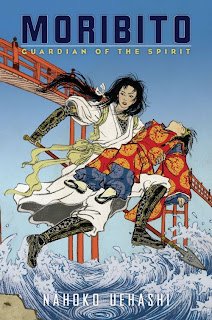 But best of all? You know what I paid for it?
But best of all? You know what I paid for it?$6.99 on eBay. ($13.99 including shipping.)
God bless the Internet, I say.
 But best of all? You know what I paid for it?
But best of all? You know what I paid for it?

Arthur asked me to pose the following question here:
I’m scheduled to do a Q&A session at this coming weekend’s SCBWI conference in
What I’m looking for are some other good examples of confusing or opaque lingo that I should come prepared to discuss at this session….
Care to chime in? Leave your editorial head-scratchers in the comments and he shall answer all this weekend. (He also has been known to post his talks over at http://www.arthuralevinebooks.com/blog.asp, so keep an eye out over there.)
Am not I your Rosalind?ORLANDO
I take some joy to say you are, because I would be talking of her.ROSALIND
Well, in her person, I say I will not have you.ORLANDO
Then in mine own person I die.ROSALIND
No, faith, die by attorney. The poor world is almost six thousand years old, and in all this time there was not any man died in his own person, videlicit, in a love-cause. Troilus had his brains dashed out with a Grecian club; yet he did what he could to die before, and he is one of the patterns of love. Leander, he would have lived many a fair year, though Hero had turned nun, if it had not been for a hot midsummer night; for, good youth, he went but forth to wash him in the Hellespont and being taken with the cramp was drowned and the foolish coroners of that age found it was 'Hero of Sestos.' But these are all lies: men have died from time to time and worms have eaten them, but not for love.ORLANDO
I would not have my right Rosalind of this mind, for, I protest, her frown might kill me.ROSALIND
By this hand, it will not kill a fly. But come, now I will be your Rosalind in a more coming-on disposition, and ask me what you will. I will grant it.ORLANDO
Then love me, Rosalind.ROSALIND
Yes, faith, will I, Fridays and Saturdays and all.ORLANDO
And wilt thou have me?ROSALIND
Ay, and twenty such.ORLANDO
What sayest thou?ROSALIND
Are you not good?ORLANDO
I hope so.ROSALIND
Why then, can one desire too much of a good thing?ROSALIND
. . . . . . .
Now tell me how long you would have her after youORLANDO
have possessed her.
For ever and a day.ROSALIND
Say 'a day,' without the 'ever.' No, no, Orlando; men are April when they woo, December when they wed: maids are May when they are maids, but the sky changes when they are wives. I will be more jealous of thee than a Barbary cock-pigeon over his hen, more clamorous than a parrot against rain, more new-fangled than an ape, more giddy in my desires than a monkey: I will weep for nothing, like Diana in the fountain, and I will do that when you are disposed to be merry; I will laugh like a hyen, and that when thou art inclined to sleep.ORLANDO
But will my Rosalind do so?ROSALIND
By my life, she will do as I do.ORLANDO
O, but she is wise.ROSALIND Or else she could not have the wit to do this: the wiser, the waywarder: make the doors upon a woman's wit and it will out at the casement; shut that and 'twill out at the key-hole; stop that, 'twill fly with the smoke out at the chimney.